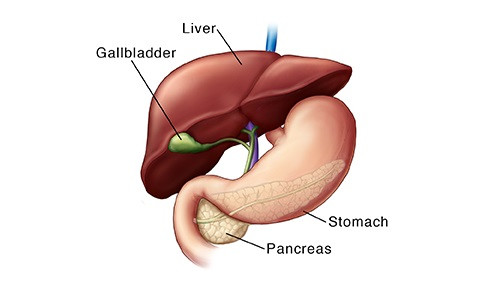- Customer Care +91 8800900271
- About Us
- Contact Us
- Sell Your Brand
- International Orders
- Disease
- Homoeopathy
- Willmar Schwabe Germany
- SBL
- REPL
- Dr. Reckeweg
- Willmar Schwabe India
- Bakson's
- Hapdco
- Lords
- Allen
- B Jain
- Adven
- Dr. Wellmans
- Indo German
- Medisynth
- Wheezal
- Adel
- HSL
- New Life
- Bioforce
- JVS
- Hahnemann Laboratory (HL) Calcutta
- Bios Laboratory (BL)
- Parul Homoeo Laboratories (PHL)
- Allen Calcutta
- Bhandari
- Dr. Bhargava
- PHBL
- SSL
- Dr Vijay's
- Natcure
- Kent Pharmaceuticals
- Similia
- Ralson
- St. George
- SHL
- Burnette's Homoeopathy
- Purusottam Homeo Bikas Laboratory (PHBL)
- Father Muller Pharmaceuicals
- National Homoeo Laboratory
- EL Dr. Lal Singh Expertise
- Dr Patel's
- Bangalore Bio-Plasgens (BBP)
- Boericke Research Laboratory (BRL)
- Ayurveda
- Unani
- Health & Fitness
- Books
- Veterinary
- Online Consultation
- International Orders


Sorry Liver And Gall Bladder Its Friday: Dr. Reckeweg R7 Drops

- By: Dr Admin
- Profession: BHMS
- Category: Homoeopathy
- Jan 17, 2022
The Liver is the largest organ of the body weighing 1400-1600 gm in males and 1200-1400 gm in females.
There are 2 Anatomical lobes—Right and Left:
The right lobe is about six times the size of the left lobe.
Functions of Liver:
The liver has multifold functions:
Manufacture and excretion of the bile.
Manufacture of various major plasma proteins such as albumin, fibrinogen and prothrombin.
Metabolism of proteins, carbohydrates and lipids.
Storage of vitamin A, D and B12 and iron.
Detoxification of toxic substances like alcohol and drugs
Serves as a blood reservoir (contains 7% of blood volume)
The Gall bladder is a pear-shaped organ, having a capacity of approximately 50 ml, 9 cm in length. It consists of the fundus, body and neck that tapers into the cystic duct. The two hepatic ducts from the right and left lobes of the liver unite at the porta hepatis to form the common hepatic duct which is joined by the cystic duct from the gallbladder to form the common bile duct.
The liver secretes approximately 500 ml of bile per day and the gallbladder concentrates it 5-10 times.
Functions of gall bladder:
- To store and concentrate bile and send it in the intestines for digestion and absorption of fats
- To respond to intestinal hormones (such as cholecystokinin) to empty & refill the bile stores
- In regulating the composition of
- To control the flow of bile into the small intestines
Common Liver and Gall bladder complaints:
- Hepatitis: Inflammation of the liver caused by Hepatotropic viruses, usually caused by viruses like hepatitis A, B, C, D and E.
- Cirrhosis: Long-term damage to the liver may cause irreversible end-stage of several diffuse diseases causing hepatocellular injury.
- Liver failure: The inability of the liver to perform its normal synthetic and metabolic functions as a part of its normal physiology. There are many causes like infection, genetic diseases, excessive alcohol.
- Ascites: Abdominal swelling caused by the accumulation of fluid, often related to liver disease.
- Hemochromatosis: It is a disorder in which extra iron builds up in the body to harmful levels. The iron deposits throughout the body, causing multiple other health problems.
- Primary sclerosing cholangitis: It is a rare chronic liver disease characterized by a progressive course of cholestasis with inflammation and fibrosis of the intrahepatic and extrahepatic bile ducts in the liver.
- Primary biliary cirrhosis: It is a chronic disease of the bile ducts where the liver is slowly destroyed.
- Cholelithiasis or Gall Stones: Hard deposit within the fluid in the gallbladder. Gallstones cause pain, nausea, or inflammation.
- Cholecystitis: It is the Infection of Gall bladder, often due to a gallstone that blocks the gallbladder.
General Indications for Dr. Reckeweg R7 Drops
- Organic and functional disturbance of liver and gallbladder
- hepatopathy& cholecystophathy
- calculi
- disturbances of the biliary secretion
- hepatitis
- swelling of the abdomen
- premature satiety
- lack of appetite
- bitter taste in mouth
- flatulence
- constipation
- weariness after meals
Mode of action of individual ingredients in Dr. Reckeweg R7
- Carduus marianus: Painful swelling of the liver causing jaundice, biliary calculi, cholangitis. Fulness in hypochondria necessitating deep inspiration. Liver region is sensitive to pressure. Pressure, tension and stitches in liver on lying on left side
- Chelidonium: Swelling of the liver with sensation of pressure on liver and biliary vesicle and extending to right shoulderblade, cholagogue. Stitches in liver and spleen region. Shooting stitching pain through liver to back; crampy pain in the inner angle of scapula, hypochondrium and scrobiculus cordis tense and is painful on pressure. Pains across umbilicus as if the abdomen constricted by a string. Abdominal plethora; distension, rumbling.
- Cholesterinum: Enlargement of the liver causing jaundice and formation of gallstones. Burning pains in side; on walking holds his hand on side, hurts him so. Opacities of the vitreous. Gallstones and insomnia
- Colocynthis: Cramp-like pains in the abdomen, cannot stand pressure of the clothes. At the time pain occurs, improvement is obtained through strong pressure on abdomen and through bending over. Colic with cramps in calves. Cutting in the abdomen, especially after anger. Every paroxysm is attended with general agitation and a chill over the cheeks, ascending from the hypogastrium.
- Lycopodium: Meteorism and flatulence, bitter taste of mouth, bad humour and constipation. Constant sense of fermentation in the abdomen, like yeast working on upper left side. Hernia on right side. Liver is very sensitive. Brown spots on abdomen. Dropsy, due to hepatic disease. Hepatitis, atrophic from of nutmeg liver. Pain shooting in the lower abdomen from right to left.
- Nux vomica: Hypochondria, liver constriction and congestion, nausea, abuse of tobacco, icterus, gastro-duodenal catarrh and constipation. Flatulent distension, with spasmodic colic. Colic from uncovering. Liver engorged, with stitches and soreness. Colic, with upward pressure, causing shortness of breath, and desire for stool.
Get the Latest Updates Blog
 Click here to Pay
Click here to Pay

Please send the screenshot at 880 090 0271

